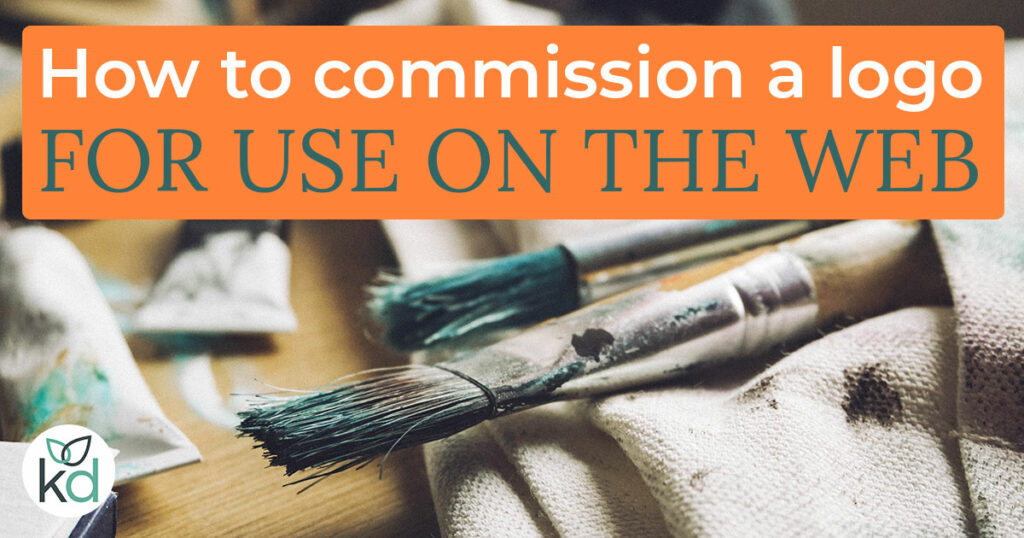Probably the most important aspect of a brand identity is the logo. The logo is a brand’s stamp that will inscribe itself into the hearts and minds of an audience.
I see small businesses and start-ups sidestep the commissioning of a logo due to expense. In my opinion, that’s a mistake and this is an impartial post – I do not make money creating logos.
A brand’s logo can mean the difference between appearing professional and looking makeshift which will be reflected across all your marketing material.
It appears on the website, Facebook page, Twitter profile, Google My Business page, TripAdvisor, Instagram, Behance, Pinterest and many other places across the web. It can be a text-based logo or an icon. It can include your product photo or just the initials of your business name.
The logo will be displayed across 1000 interfaces before you know it. And that’s without considering offline marketing – business cards, vehicles, banners, shop windows, signs and vouchers.

Logos on websites
As a web consultant with many years of experience, I have seen a huge number of logos both good and bad.
When I’m briefed on a website design project I consider the colours and shape of the logo before I begin. The layout of the website is governed by the shape of a logo.
Website content should be accessible quickly, after all, people are visiting a website for information, not to must over a logo. Keep it subtle.
The logo shouldn’t take up too much space ‘above the fold’ – this is the portion of the web page that is visible when the page first loads.
Adequate space should be left to view the page content and guide the visitor to the next step.
The readability of a logo on the screen is important, whether it is small or large. A portrait logo with a long strapline above or below it will be illegible on a small screen. Keep the logo clean.
It is also worth remembering that the logo will appear over hundreds of platforms, all of which demand different shapes and sizes.
The solution? A responsive logo.
Logos for social media networks
Leading brands use a responsive logo which is a truncated version of the original.
The truncated logo should recognisable even when reduced to the size of a small circle.
It must be similar to the full version of the logo, so people can perceive the brand which ever logo they are looking at.
A responsive logo can be used across social media networks or as an avatar.
Having different versions of a logo readily available means the business brand looks consistent, everywhere it appears.
Types of logo
A logo can be font-based, a symbol or a combination of the two.
State the name of the company on the full logo. Represent the type of business and its target audience. Use fonts and colours that would help connect with them.
Here are two examples:
- A logo for a high-end restaurant.
The restaurant would want to engage with clientele that is comfortable spending money on hospitality. Use a modern font, clean lines and classic colours like navy, black, deep green or gold. A logo and stationery of this calibre will communicate the price range and the ambience – and will help to avoid problem customers. - A logo for family-friendly entertainment.
A family-friendly logo should be bright, fun and could be in a handwriting ‘script’ font. This lets the audience know that the company is approachable, upbeat and enjoyable. Families are often concerned about spending, so don’t go too high-end when targeting families.
Customers should have a clear idea of the company industry simply by looking at the logo. The connection is deep-set and often the customer is unaware of it.
One way to portray your business type is to use a symbol as a statement.
Symbols are instantly recognisable so they are great for branding and this symbol can be used as a responsive logo.
Websites can be programmed to respond to the user’s device – a responsive website. A full logo might be displayed on a computer screen, the truncated version on a smartphone.
Logos as favicons
Websites are recognisable by favicons (short for ‘favourites icon’).
Used correctly, the favicon will show up on:
- The tab when someone visits the website.
- The list of websites within bookmarks.
- To the left of the website address on most browsers.
- The shortcut to a website on a device’s home screen.

When my website or blog is viewed my favicon displays in the tab.
The favicon is tiny but it brings brand awareness. It makes it easier to distinguish between sites when several tabs are open.
Choose a logo or symbol that will look good as a favicon and an avatar. Resize it to 30 pixels and see how it looks before you start to use it.
Thoughts when commissioning a logo
When commissioning a logo consider the following:
The industry you are representing
Does the logo reflect the industry?
Audience
Is your target audience younger, older, male, female, high-end or mass market? Are they technologically capable? Are they business owners? Parents? Mothers? Fathers?
Colours
Colours will affect moods – choose them carefully. Certain colours can repel some demographics.
Fonts
The logo font must be legible but representative. Swirly fonts can create a fun, inviting look but check that people can distinguish the words. There’s nothing worse than people not being able to read the company name. Or worse, seeing different words – I’ve seen swear words appear when two words are joined together.
Size and shape
It is so worth having your logo available in more than one size and shape so you can use it in different places on the web.
Longevity
Make sure it will represent your company for years to come, even if it requires a few adjustments down the line. It’s okay to make changes to a logo to keep up with trends but don’t go completely off-brand.
Use a graphic designer
An awful logo will make your company look bad and will make marketing and branding extremely difficult.
Use a graphic designer to create a logo that looks professional.
Find a good graphic designer with original ideas by looking through a range of portfolios. If they are good, they will ask you a series of questions to get to know you and your business.
Provide a graphic designer with ideas but try not to hinder their creative flair. Brief them using the points in this post.
Large design companies charge more than £2,000 for corporate identities which is worth it for a top-class, original branding idea.
A small business can find fantastic freelancers that will do a great job for between £500 and £1000.
Freelancer and Fiverr can be good places to start for a cheap logo but don’t undervalue a brand logo by opting for the cheapest design. I’ve seen some truly terrible logos surface from bargain deals.
Here’s an amusing article on Bored Panda – Designer Fixes – The World’s Worst Logos.
Updating your company logo
Never change the look of a logo beyond recognition. This is your company’s brand. People should be able to glance at your material and recognise that it is created by you.
If you feel you have to completely change your look, you will need to set aside time and money to rebrand.
Trademark
Once you are happy, Trademark the logo so that no one else can use or copy it. Use either of the links below:
Let me know your thoughts on commissioning a logo.
